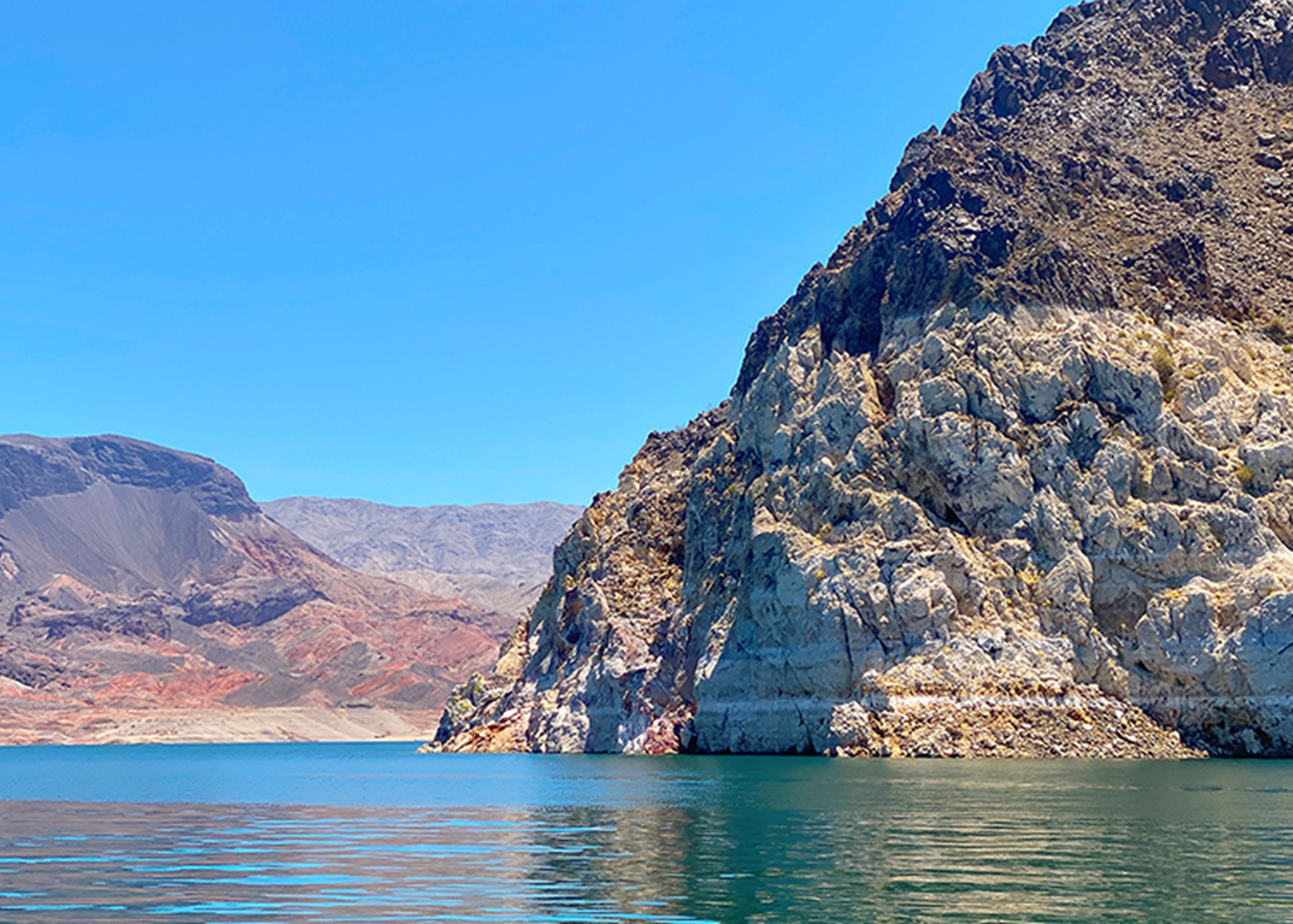
Colorado River Basin States continue to grapple with many factors impacting available water supplies, including severe drought, exacerbated by climate change (photo courtesy of U.S. Department of Interior).
Water is life, especially in the desert, and for a growing city like Phoenix long-range planning and management of its resources is paramount.
Phoenix gets 40 percent of its water from the Colorado River, which for years has been severely impacted by drought, exacerbated by climate change, and subjected to a complicated management history.
“Water is pretty simple,” said Warren Tenney, executive director of the Arizona Municipal Water Users Association (AMWUA), when we spoke to him in August. “But we sure make it complicated to manage it.”
Formed in 1969, AMWUA is a collaboration among 10 municipalities in Arizona, including the City of Phoenix, which together provide water to 3.7 million people — more than half of the state’s population.
Of the collaboration, Tenney said, “It’s the principle of strength and numbers and speaking with one voice.” The shortages on the Colorado River are a serious concern, and at its Aug. 10 board meeting, he made the stark announcement: “Without strong action, the river is headed for disaster.”
The Colorado River is roughly 1,450 miles long and begins its journey southward into Mexico from Colorado and Wyoming. The drainage basin area, about 246,000 square miles, includes all of Arizona, and parts of California, Colorado, New Mexico, Nevada, Utah and Wyoming — also known as the Colorado River Basin States.
The river and its tributaries provide water to nearly 40 million people, both within and outside of the basin, and irrigates nearly 5.5 million acres of agricultural lands.
As we entered 2022, U.S. Secretary of the Interior Deb Haaland declared the first-ever Tier 1 shortage for Colorado River operations. This resulted in a substantial cut to Arizona’s river supply, about 18 percent. The reductions fell largely on central Arizona agricultural users, with no reduction in water to municipalities. The situation since the beginning of the year, however, has worsened.
At the beginning of June, Phoenix declared a Stage 1 Water Alert and activated its Drought Management Plan, which states, “As a result of the declaration, the City will begin an intensive public education and information program to assist all customers in understanding the state of the emergency and the need for voluntary conservation.”
On July 14, U.S. Bureau of Reclamation Commissioner Camille Touton testified before Congress that Colorado River Basin states will need to conserve between 2- to 4-million-acre feet of water in 2023 to protect Lake Mead and Lake Powell’s reservoirs. If the states were unable to come up with a plan together, Reclamation would do so. A deadline of Aug. 15 was given.
Reclamation released its Colorado River Basin August 2022 24-Month Study on Aug. 16 and called for additional cuts to water and ongoing conservation contributions. In a statement, U.S. Assistant Secretary for Water and Science Tanya Trujillo said, “Every sector in every state has a responsibility to ensure that water is used with maximum efficiency. In order to avoid a catastrophic collapse of the Colorado River System and a future of uncertainty and conflict, water use in the Basin must be reduced.”
The bottom line for Arizona: in 2023, Lake Mead will enter Tier 2a Shortage status and the state will see a reduction of 592,000 acre-feet of water, which is approximately 21 percent of the state’s annual apportionment. Nevada, another Lower Basin State, and Mexico will also see reductions. California will only be required to make a water savings reduction under a Tier 2b status.
The City of Phoenix responded to Reclamation’s report in a released statement that said, in part, “Today’s announcement did not include a Basin State plan to reduce demand or a federal unilateral action to save the Colorado River. Given the serious circumstances on the Colorado River, this lack of action is disappointing.
“Phoenix continues to advocate for additional collaboration throughout the Colorado River Basin and has demonstrated its commitment to sustainability and stability. In 2022 alone, Phoenix voluntarily gave up 23 percent of its available Colorado River entitlements to stabilize water levels in Lake Mead and help Pinal farmers who lost access to Colorado River supplies.”
So, what does all this mean for Phoenix residents? Will the city move into a Stage 2 Water Warning status?
A Stage 2 Water Warning occurs when “an insufficient supply situation occurs.” This stage authorizes the Water Services Department director to impose and enforce water use reduction regulations and impose a drought surcharge on the City Services bill. But we are not there yet, says City of Phoenix Water Resources Management Advisor, Cynthia Campbell.
“Stage 2, by definition, implies that we don’t have enough water to serve the full needs that we have right now,” said Campbell. “A Tier 2a shortage takes some of our Colorado River water, but it’s water that we were actually going to store underground. Our needs are already fully met with our higher priority supplies of Colorado water. The point is, the cut is not bad enough to impact customer delivery at this point.”
The city has been working for decades preparing for the possibility of water shortages. Campbell says that it has built a diverse and robust portfolio of water that is larger than current customer use. It is working with developers to build infill that takes advantage of current infrastructure and promotes EPA Water Sense certification in new homes. Phoenix is conducting ecosystem restoration in the Salt River system, which provides 60 percent of the city’s water. The city also has built new infrastructure when needed, such as the Drought Pipeline currently under construction, which will move water from the Verde River, a major tributary of the Salt.
“When we made that decision to, back in about 2017, to invest $300 million in a pipe to move water from south to north, the reason was, we perceived a potential risk in the Colorado River supplies,” Campbell said.
“We made that investment and lo and behold, it’ll be ready next year, right about time we may need it. That’s the kind of planning that Phoenix has historically done. The city of Phoenix paid $3 million, an unheard-of sum in 1950s, to build infrastructure gates at Horseshoe Reservoir on the Verde River, 50 miles away. That bought us a water supply that we’re now going to turn around and put in a drought pipeline to serve North Phoenix when we need to.”
She added, “The most important thing to know is that Phoenix has been preparing for many, many years for prolonged shortage. We’re in pretty good shape as we go in and, in the short term, there will be no interruption to customers. What we are looking at down the road is the possibility of a more severe impact to our portfolio, primarily caused by climate change. We need to make sure that we continue to do what the city has done for 70 years. And that is, we adapt. We get used to new situations. We double down on conservation, and we want our customers to be our partners in that.”
There are ways that residents can hold up their side in this partnership. Even small acts can add up.
AMWUA shared five ways that residents can be part of the solution. First, learn where and how you use the most water. Then, find and fix visible and hidden leaks indoors and out; water your yard efficiently and effectively; don’t overseed (plant winter grass); and transform your yard into a desert-adapted landscape.
Tenney added, “It’s important for residents to understand that there are committed professionals in all of the cities that — whether that is operating a treatment plant, or working out on the system, or the folks that look at water resources, as well as the conservation staffs — are all working to make sure that we have water every time we turn on our taps. Municipalities understand that they’re in the forever business.”
At the end of the day, says Tenney, “We’re all in this together.”
From history and current strategies to helpful conservation tips, both AMWUA and the City of Phoenix offer a wealth of resources to residents. Visit www.amwua.org/what-you-can-do and www.phoenix.gov/waterservices/resourcesconservation.
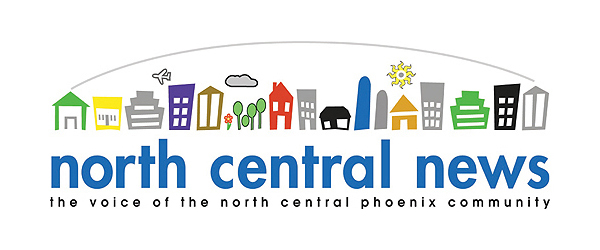
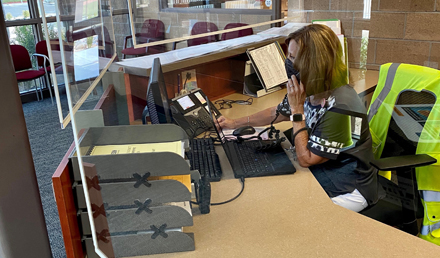

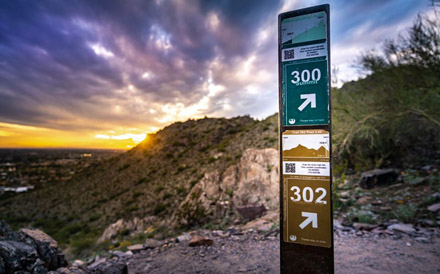

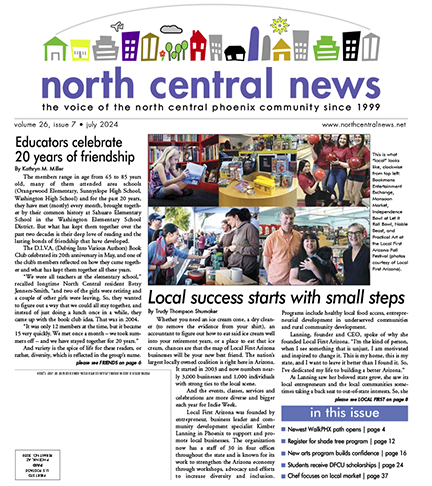




































Thanks for the great reporting! The article was very informative especially the part about Phoenix paying 3 million to add gates to Horseshoe Reservoir in the 1950’s.